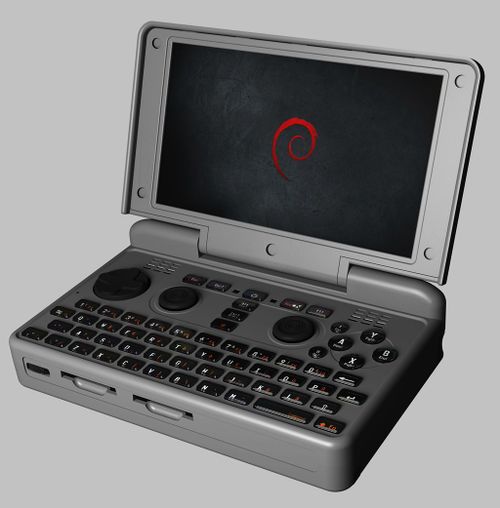Hardware overview: Difference between revisions
Jump to navigation
Jump to search
m (→Internals) |
m (→Connectivity) |
||
| Line 26: | Line 26: | ||
=== Connectivity === | === Connectivity === | ||
* Integrated [[WiFi|Wi-Fi]] 802.11a/b/g/n and [[Bluetooth]] 4.0 | |||
* Optional 3G/4G/UMTS [[Modem]] and [[GPS]] | |||
* Headset-Port | * Headset-Port | ||
* 1x HDMI Video Out | * 1x HDMI Video Out | ||
| Line 31: | Line 33: | ||
* 1x Micro USB 3.0 | * 1x Micro USB 3.0 | ||
* 1x Micro USB (Debug and Charging) | * 1x Micro USB (Debug and Charging) | ||
=== [[Storage]] === | === [[Storage]] === | ||
Revision as of 19:10, 31 March 2016


The Pyra is a perfect pocket device for everyday computing, gaming, emulation or hacking. It is a unique combination of a gaming handheld and a mini-laptop (approximately the size of the Nintendo DS), running plain Debian Linux as OS. It is the successor of the OpenPandora.
Hardware
Input Devices
- Gaming controls (DPad, 4 shoulder buttons, 6 face buttons)
- Two accurate analog controls (Nubs) with push-button
- QWERTY Keyboard with backlight
- Touchscreen
- Analog volume wheel
Internals
- 6000mAh Battery
- 720p 5" LCD (Interchangeable in the Future) Display
- Vibration motor
- Various sensors (accelerometer, gyro-sensor, etc.)
- On an interchangeable CPU-Board:
-
- 2x ARM Cortex-A15 @ 1.5Ghz with NEON SIMD
- 2x ARM Cortex-M4
- PowerVR™ SGX544-MP2 (see GPU)
- Vivante GC320 2D Accelerator
Connectivity
- Integrated Wi-Fi 802.11a/b/g/n and Bluetooth 4.0
- Optional 3G/4G/UMTS Modem and GPS
- Headset-Port
- 1x HDMI Video Out
- 2x Full-size USB Host (one can be used as eSATA-with a small adaptor)
- 1x Micro USB 3.0
- 1x Micro USB (Debug and Charging)
Storage
- Internal eMMC
- 1x Internal MicroSDHC Slot
- Dual SDXC card slots